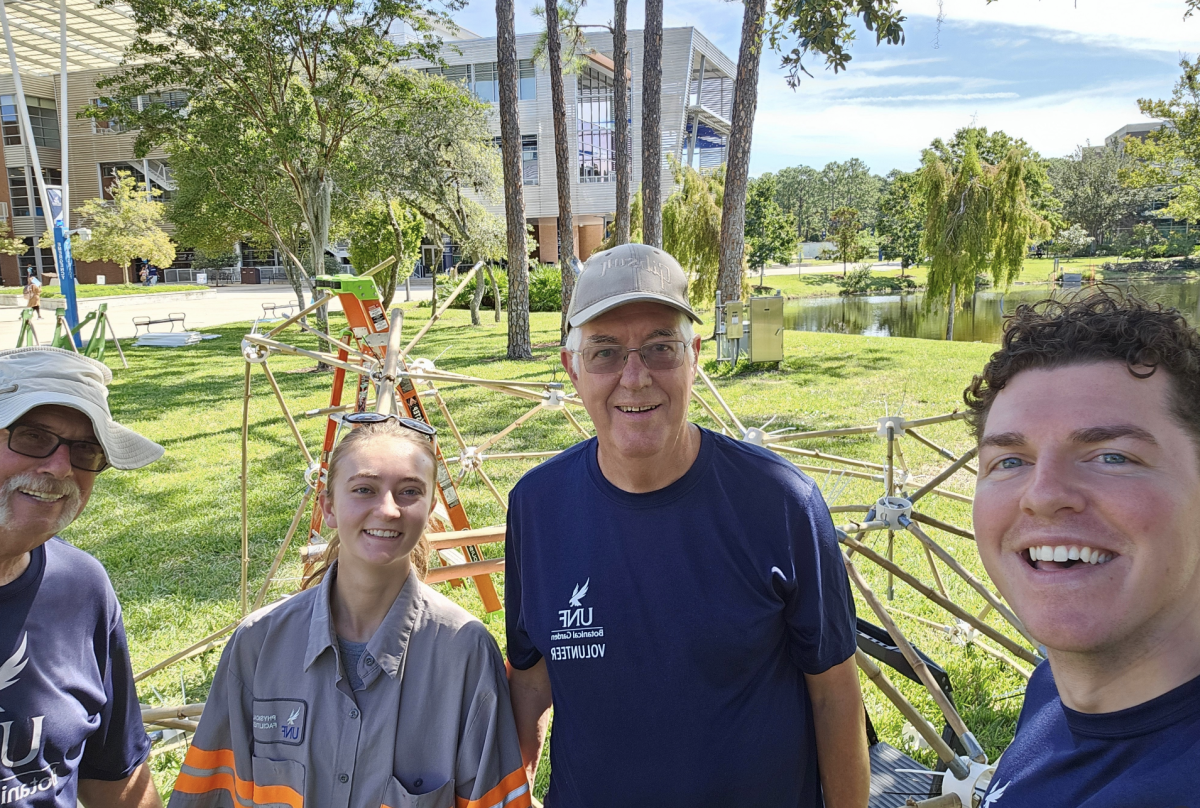There are predators in the Sawmill Slough Preserve whose desire for blood makes their eyes roll back and mouth drool.
These predators, according to UNF Environmental Center Ecologist Justin Lemmons, can smell the CO2 from a mammal’s breath and pick up on motion through the trees.
This predator is also smaller than the size of your thumbnail.
Amy Costa, assistant director of Eco-Adventure, said for the past two weeks, the flies have been dense on the trails around dusk and dawn.
Flies and mosquitoes ambush their prey, waiting on a trail or under a bridge, and are making their presence known on campus.
Flies
Child psychology junior Caroline Daguinod said she’s been running on the trails recently, and she’s been swatting the deer flies non-stop. Meanwhile, civil engineering junior Chad Webb stays clear of the trails to avoid the problem.
Horse-flies and deer-flies are yellow in color and have scissor-like teeth to cut flesh said Lemmons. He said their saliva contains an anticoagulant that pools blood and numbs the body from feeling the immediate bite. The fly then sucks up the pool of blood.
“Only the the female flies and mosquitoes will bite you because they have to nourish their eggs,” he said. The males of both species actually eat pollen and nectar.
The current abundance of flies on the trails right now is due to where they are in their life cycle.
The females lay their eggs in water during the fall. The eggs hatch and pupae begin metamorphosis in the spring. By May, flies grow wings and become adults. Then, they begin mating, and they can mate more than once.
Their adult life can last 30-60 days. By September, they’ve laid their eggs and begin to die.
Ticks
It’s common for ticks to attach themselves to people on the eco trails, Lemmons said.
Lemmons said there are several species of ticks living in the Sawmill Slough Preserve. But unlike the flies, he said, the ticks can be bothersome all year-round.
The lone star ticks and American dog ticks can be a problem during the summer, he said, because that’s when they’re most active. In the fall, the black legged tick species are more active.
Avoiding the bugs
According to the Center for Disease Control, the flies and ticks can transmit diseases like tularemia which can cause bacterial infections.
Lemmons said the infection rates in humans are low, especially in Florida. But he said he would caution students to not willingly allow the bugs to suck their blood.
Alex Moral, deaf education senior, said there aren’t many ways to escape from the flies except by running away, and even then the bugs follow her.
Lemmons recommends using bug spray with DEET, a chemical that repels most insects. He uses bug spray when he’s working in the Sawmill Slough Preserve during the day
Costa tells the campers at Eco-Camp and the runners on the trails not to panic or start swatting the flies because it won’t help. Instead, she tells them to just remain calm and the flies will leave.
Covering up is a good idea for avoiding insect bites, Lemmons said. He said even though it’s hot outside, wearing shirts with long sleeves and pants will prevent the bugs from biting your body.
Wearing light colored clothes instead of dark colors will help you find the ticks easier after being outside, he said. The tick’s dark body will contrast with light clothing, that way you’re more likely to notice one on you.
Good Bugs
Not all bugs are bothersome pests, but actually beneficial to the environment, Lemmons said.
“The dragonflies are predators that eat the mosquitoes,” he said. “And the beetles are decomposers that eat the decaying plants.”
Costa said the flies aren’t as bad now as they were in the beginning of June.
But, Lemmons said, it’s impossible to avoid the countless species of bugs, especially in Florida.
“The bugs breed in the wetlands,” he said, “and all of Florida is a wetland.”
So, cover up if you go outside and consider swapping your perfume or cologne for bug spray. The flies, ticks, and mosquitoes are here to stay.
Email Brandon Thigpen at reporter2@unfspinnaker.com







